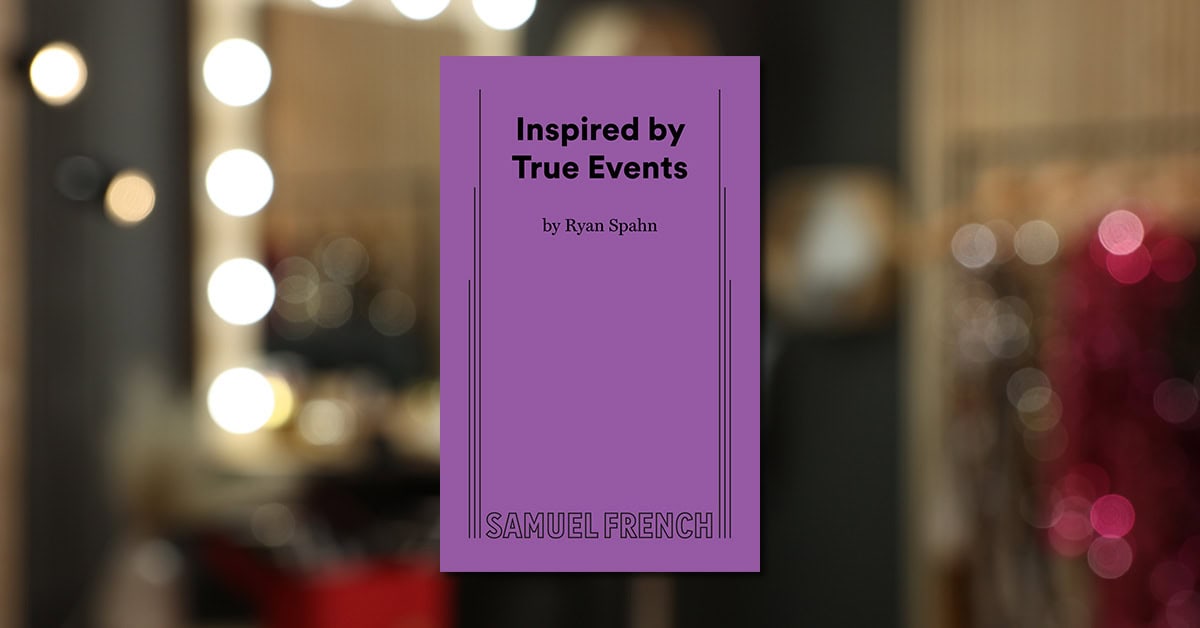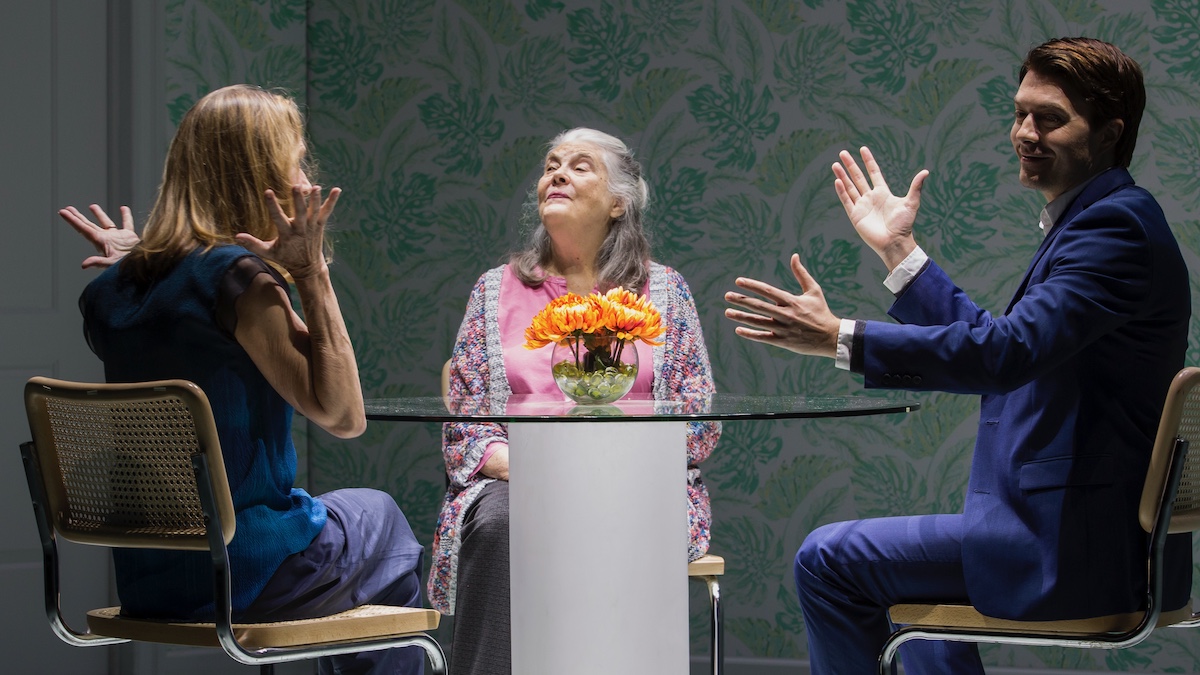
Agatha Christie is well-known for writing for the page and the stage, but it is not common knowledge that she also wrote for radio and television as well. Recently, three radio plays and one television play by Christie have been published for the first time by Samuel French and made available for production.
As written, these plays can be produced on a local radio station, or on stage in the style of the old-time radio broadcasts (indeed, a production of these plays in radio format, titled The BBC Murders, (a reference to the original broadcasting network and a riff on Christie’s classic novel The ABC Murders), has played to delighted audiences around the world). Should a creative team desire, they can easily be performed on set with costumes, just like regular stage plays.
Each play can be performed in about half an hour, making them perfect for a night of one-acts.
Christie’s play Personal Call is not a “whodunit” so much as a “what is going on?” It opens with a man, James Brent, living an ordinary existence, enjoying a cocktail party, when he gets a phone call that will change his life forever. The voice on the other end of the line supposedly comes from his deceased wife, Fay. At first James believes it’s all a nasty prank, but future calls soon make him wonder if there’s something more sinister behind the messages, and soon James’ new wife Pam is receiving a call of her own. Fay died in a tragic accident, but the phone messages suggest that there’s more to her demise than previously believed. Is it a practical joke? A malicious plot? Or is something genuinely supernatural behind it all? As the story progresses, a police inspector from Christie’s novel The Sittaford Mystery steps in to investigate and find out who’s making the unsettling phone calls, and what was behind Fay’s death. (US/UK)
Yellow Iris is a unique addition to Christie’s oeuvre. Not only does it feature her famous detective Hercule Poirot (who only appears in three of her plays, despite appearing in dozens of novels and scores of short stories), but it is also a play with music. It is not a traditional song-and-dance musical. Before the image of Poirot tap-dancing and swinging his cane, singing “I know who the killer is!” in a great big eleventh-hour number passes through anybody’s mind, it should be stressed that Poirot does not have any songs in Yellow Iris. Indeed, the play is completely naturalistic. The story is set in a nightclub, and the lead singer punctuates the investigation with romantic ballads that reflect the complex personal lives of the characters, and, if one listens closely, may just provide some subtle clues as to who is behind the dark events behind that evening’s gathering.
Yellow Iris is based on Christie’s story of the same name, and retains much of its original dialogue, which is a rare adaptational choice on Christie’s part. A group of people come together to commemorate a woman who died of cyanide poisoning some time earlier, a death that was officially labelled a suicide. Five people: her husband, her sister, her sister’s boyfriend, a love interest of her husband, and her husband’s business partner, reunite to find out what really happened that night, and Poirot joins the group to prevent a second tragedy. If the plotline seems familiar, Christie expanded this plotline into her novel Sparkling Cyanide, though she cut Poirot from the book. (US/UK)
The last of the three radio plays is Butter in a Lordly Dish. Like Personal Call, this is a completely original story. The title is a Biblical reference, and it is taken from the story of Jael, a woman who took drastic steps to protect her people from a dangerous man. In Butter in a Lordly Dish, Sir Luke Enderby is a self-satisfied, successful lawyer, who has built up a reputation by prosecuting some high-profile cases, such as the “Blondes on the Beach murders,” where a serial killer strangled young women on the coast of England. Sir Luke had no compunction about sending the accused man to the gallows, and equally he has no scruples against serial adultery. His wife seems resigned to his “weekend trips,” and his latest mistress seems infatuated with him. As the play progresses, Sir Luke learns that there may be more to the “Blondes on the Beach” crimes than previously suspected, and somebody may be out for vengeance. (US/UK)
If the plays are performed in radio format, many roles can be doubled (or tripled), with the actors adopting different voices.
Christie’s only television script, The Wasp’s Nest, is based on her similarly titled short story. The play was performed for television in the days before episodes were recorded on film for posterity, so sadly no tape of the original broadcast exists. It’s a four-character play about love, betrayal, and revenge, and Poirot steps in to make the most of a rare opportunity: the chance to prevent a murder before it happens. The eponymous object is both an actual wasp’s nest and a metaphor. A nest of stinging insects is targeted for removal, and the method of choice for exterminating the wasps – cyanide – might be put to an even more deadly purpose. Meanwhile, a love triangle is rapidly spiraling out of control, as a young, beautiful woman is trying to keep the peace between her ex-lover and her current fiancé. Some chance discoveries by Poirot lead to him inserting himself into the characters’ tangled romantic lives. Who is the cyanide meant for, and who wants who dead? As the play unfolds, the most obvious solutions prove to be far from correct, and Poirot will have to use some skills he learned from a petty criminal in order to stop a very devious murder. (US/UK)
The plays can be performed individually, or in groups of two, three, or four. For theaters wishing to produce a pair of Poirot plays where the great detective tries to prevent a murder before it happens, The Wasp’s Nest and Yellow Iris can be performed together in the collection A Poirot Double Bill (US/UK). Additionally, the three radio plays are available in the collected volume Murder in the Studio (US/UK). These plays are a great way to introduce Christie and mystery fans to some of her lesser-known works.
…
Learn more about the Agatha Christie Collection by clicking here in the US and here in the UK.
Photo: Agatha Christie (The Christie Archive Trust)

Inspired by True Events: A Conversation with Playwright Ryan Spahn

Plays About Technology

